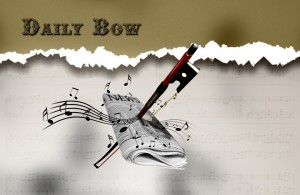
As if Bach needed to be “reinvented…” but that’s what author Paul Elie has attempted to do in his latest book Reinventing Bach.
The legendary composer wrote the last of his works several centuries ago, and since then his legacy has become cemented through the countless performances of his famed compositions. While his music can be considered “old” by most standards, it has retained the ability to transport us to new places through the musical connections it makes.
One of the most interesting things about Bach is the sheer variety of interpretations one can find, from Glenn Gould and Angela Hewitt to Hilary Hahn and Pablo Casals. Bach’s style of music lends itself highly to a very nuanced form of interpretation. His music has sometimes been called “naked,” in that the compositions tend to be rather exposed… accuracy, errors, shifts in tone and style… all are distinct when they are varied.
With the wealth of information and history available to him, the author Elie explores how the last cenutry, and its musicians, have treated Bach’s music.
Bach left room for interpretation in his compositions, Elie said.
He worked “up the music just elaborately enough that it was distinctly itself but could be carried forward by others into places that maybe the composer hadn’t expected,” he said.
He points to Glenn Gould’s 1955 recording of Bach’s Goldberg Variations as the embodiment of the post-World War II moment.
“He’s not playing in the way of a Romantic artist with lots of bravado,” Elie said. “There’s a detachment, an objectivity, almost a mechanical quality to it that I associate with skyscrapers and jet planes and elevators.
Elie refers to Bach’s music as a musical form of “shareware,” his broader point being that Bach fits well in variety of different musical contexts, whether that is in various arrangements of instruments, performed in different settings, or interpreted in contrasting manners.
“It seems to work its way into different contexts and remain Bach,” Elie said. “It doesn’t get dumbed down. People don’t have to popularize it. It is what it is, and yet there it is on the soundtrack to Master and Commander or some other movie and it fits perfectly.”
In all likelihood, the focus on Bach as an innovator in composition, performance and the refining and inventing of musical instruments, also serves to place yet another spotlight on the musical titan. It reminds us that while Bach is often one of the usual entry points for kids and other young musicians to experience classical music, Bach was one of the more unusual musical figures of his (and any age).
The historical portrait of Bach is a powerful lens through which to view his influence on musical repertoire. But it works both ways, and this book seeks to highlight the inverse relationship which is less explored: how the musicians of future periods of have influenced Bach. Certainly, the topic of the book is interesting in its own right, as a historiographical work on the development of musical style. Yet, it is also very timely in the context of the digital era, when a vast body of performances and recordings past and present is available at our fingertips.
Listen to audio from the article below, including an interview with Elie:
Read the full article – Author’s new book examines recent musician’s interpretations of Bach














No comments yet.